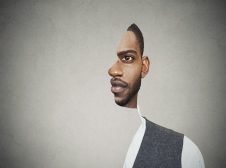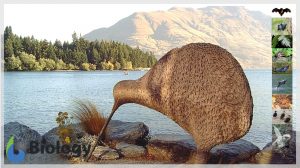Definition
noun, plural: melanophores
A type of pigment cell that, in particular, produce and store melanin
Supplement
Pigment-producing cells (chromatophores) may be classified based on the colors (or hue under white light) of the pigment the cells produce: (1) xanthophores (yellow), (2) erythrophores (red), (3) iridophores (reflective / iridescent), (4) leucophores (white), (5) melanophores (black/brown), and (5) cyanophores (blue). These pigments occur in cold-blooded vertebrates. Mammals, including humans, and other warm-blooded animals have only melanophores. Melanophores are a type of chromatophore that produce and store melanin. According to Thody and Shuster, melanophores in the skin may be further divided into two types based on their location: dermal melanophores and epidermal melanophores (melanocytes).1
A dermal melanophore is a melanophore located in the dermal layer of the skin. This type of melanophore is common in cold-blooded vertebrates and accounts for the rapid, chromomotor colour changes in these animals.1 An epidermal melanophore is found in the epidermal layer. Unlike dermal melanophore, an epidermal melanophore is not associated with rapid chromomotor colour changes but with the pigmentation of hair and skin. This type of melanophore is common in mammals. It is also referred to as melanocyte. This cell is involved in the mobilization of melanosomes into neighboring keratinocytes. 1 Melanogenesis is the process of producing melanin. The production of melanin on skin is a means of the body to protect the underlying skin layer such as the hypodermis from adverse effects (e.g. DNA photodamage) of UV-B light exposure. The black (or dark brown) pigment allows the absorption of the majority of the UV-B light passing through the skin layer.2 Thus, increased exposure to UV-B radiation leads to heightened melanogenesis. Apart from the skin, the melanocytes can also be found in the uveal layer of the eye, the inner ear, the meninges, the heart, and the bones.
See also:
Related term(s):
Reference(s):
1 Thody, A.J., Shuster, S. (1989) Melanophores, Melanocytes and Melanin: Endocrinology and Pharmacology. In: Greaves M.W., Shuster S. (eds) Pharmacology of the Skin I. Handbook of Experimental Pharmacology, vol 87 / 1. Springer, Berlin, Heidelberg.
2 Agar, N. & Young, A. R. (2005). “Melanogenesis: a photoprotective response to DNA damage?”. Mutation Research. 571 (1–2): 121–32.







